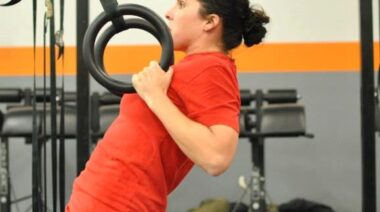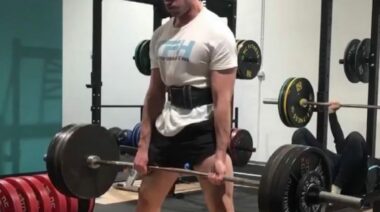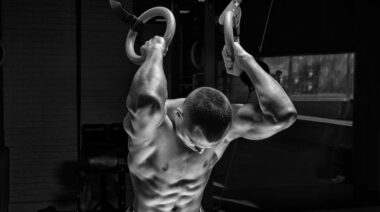As research mounts on using potentiating warm ups to boost performance, many athletes and coaches are now wondering what the best methods are to enhance athleticism. A recent article in the Journal of Strength and Conditioning Research looked at using band resistance to potentiate your 1RM squat.
In case you aren’t familiar yet with post-activation potentiation (PAP), the gist of it is essentially to lift a heavy load briefly as a warm up. Studies have shown PAP can make you stronger for anything you do shortly after. With PAP, your warm up serves not just to prevent injury, but also to boost the performance of your lifts afterwards.
Study Design
In the Journal study, each of sixteen subjects was tested on their max back squat weight. During that test, the researchers also examined knee joint kinematics and took EMG readings of muscles all over the lower body.
After this test, the subjects returned twice more, separated by a week each time. They performed a different warm up each time, followed by another 1RM back squat test and the other tests noted above. In the standard warm up, 85% of the athlete’s 1RM was used for two sets of three reps, followed by the 1RM test. In the variable warm up, elastic bands with resistance amounting to 35% of the athlete’s warm-up weight were added to the bar, and some of the free weight resistance was removed.
The 1RM of all the subjects remained the same after the standard warm up. However, thirteen of the participants (81% of them) experienced a boost to 1RM after the resistance band warm up. The boost amounted to nearly eight percent, which is pretty substantial. Imagine boosting your 300lb squat to a 324lb squat just by warming up a different way.
Analysis and Results
It’s not surprising that the resistance variable potentiated subsequent performance, but it is a bit odd that the free-weight-only condition did not. Potentiation is a well-established effect at this point, and certainly applies to many potentiating activities, including free weights. It seems that the 85% of max weight used was insufficient in the case of free weights.
Typically, efforts that potentiate future performance are performed with a greater load. For example, you might perform your three-rep-max before being tested on your ten-rep-max. That’s one possible explanation for the discrepancy.
Considerations
In order to ensure that the average resistance of the variable resistance warm up was the same as the traditional warm up, only half of the band load was subtracted from the bar weight during the variable resistance warm up. This means that the force at the top of the variable resistance squat was 100% of the subjects’ maxes.
Since the maximum load experienced during the variable resistance warm up was higher, this might explain why the two warm ups differed in effectiveness. There might not be anything special about the bands, other than the fact that they contributed more resistance during the top portion of the squat.
That said, if you’re looking for a way to achieve a potentiating effect without using big loads throughout a movement, adding band weight would be a good way to do that, according to this study. Either way, doing a potentiating warm up is a good way to improve performance, and this method seems to be an effective one.
References:
1. Minas A. Mina, et. al., “The Influence of Variable Resistance Loading on Subsequent Free Weight Maximal Back Squat Performance,” Journal of Strength and Conditioning Research, DOI: 10.1519/JSC.0000000000000471.
Photo courtesy of Cpl. Kenneth Jasik [Public domain], via Wikimedia Commons.






